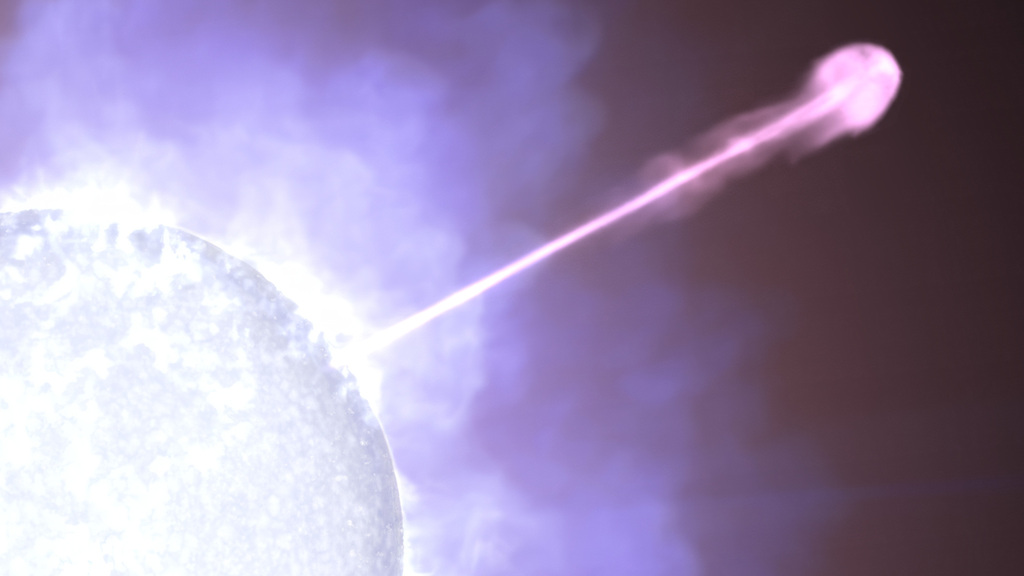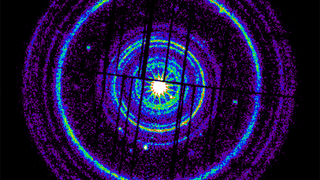Long Gamma-Ray Burst
Complete animation sequence.
Credit: NASA's Goddard Space Flight Center Conceptual Image Lab
Astronomers think a long GRB (gamma-ray burst) arises from a massive, rapidly rotating star when its core runs out of fuel and collapses, forming a black hole in the star’s center. In this artist's concept, the camera flies into a vast cloud of dust and gas the star has been steadily ejecting over thousands of years. Near the star, a particle jet driven by matter falling toward the black hole erupts from the surface at nearly the speed of light. A more distant view reveals two jets moving in opposite directions, extending into and interacting with the cloud material, and producing the GRB and its afterglow. To detect a GRB, one of these jets must point toward Earth.
Fly-in shot through a nebula to a massive star.
Credit: NASA's Goddard Space Flight Center Conceptual Image Lab
Close-up of a massive star showing the emergence of particle jet.
Credit: NASA's Goddard Space Flight Center Conceptual Image Lab
Distant shot revealing both particle jets interacting with circumstellar dust and gas.
Credit: NASA's Goddard Space Flight Center Conceptual Image Lab
Credits
Please give credit for this item to:
NASA's Goddard Space Flight Center Conceptual Image Lab
-
Animator
- Adriana Manrique Gutierrez (KBR Wyle Services, LLC)
-
Producer
- Scott Wiessinger (KBR Wyle Services, LLC)
-
Science writer
- Francis Reddy (University of Maryland College Park)
-
Technical support
- Aaron E. Lepsch (ADNET Systems, Inc.)
-
Scientist
- Eric Burns (Louisiana State University)
Missions
This page is related to the following missions:Series
This page can be found in the following series:Release date
This page was originally published on Tuesday, September 19, 2023.
This page was last updated on Thursday, September 14, 2023 at 10:29 AM EDT.

